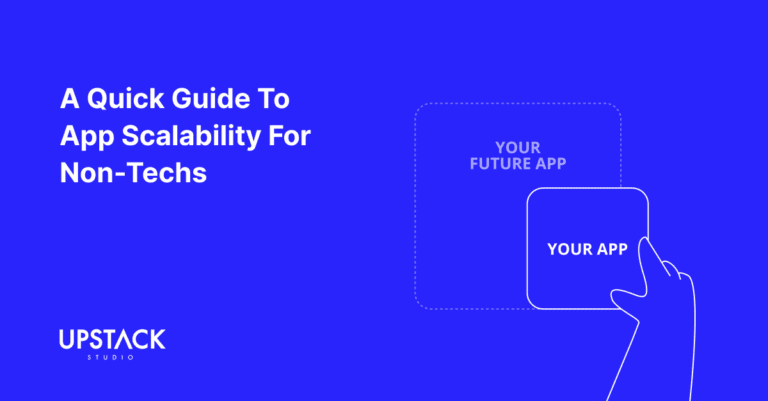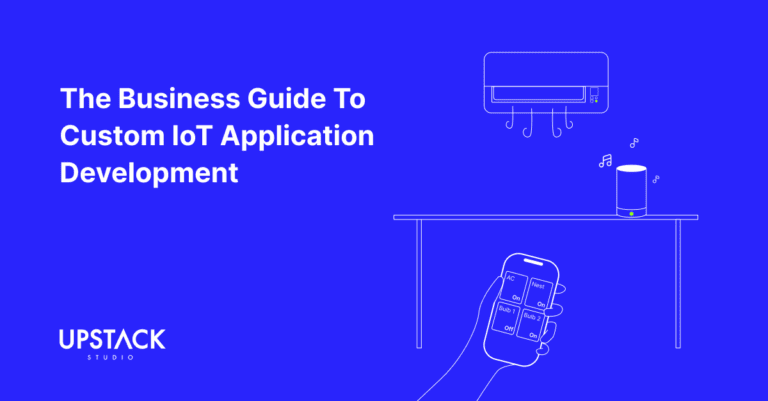Ready for E-Commerce App Development Challenges?
Building an e-commerce app is extremely challenging, with fierce competition and picky consumers that leave you up at night worried about empty shopping carts.
However, those who do it right and get lucky stand to gain significant rewards.
This guide provides an overview of building an e-commerce app, using Shopee as our point of reference.
Why is Shopee the Standard for E-commerce Apps in 2024?
Shopee has emerged as the benchmark for e-commerce apps in 2024, setting high standards for user engagement, revenue generation, and market reach that cater to regional preferences.
Headquartered in Queenstown, Singapore, and founded by Forrest Li, Shopee achieved remarkable milestones in 2023:
- Revenue and Growth: Shopee generated $9 billion in revenue in 2023, marking a 20.6% increase from the previous year.
- Gross Merchandise Volume (GMV): The platform’s GMV reached $78.5 billion, reflecting its robust transactional volume.
- Global User Base: Shopee boasted 295 million users worldwide, with Indonesia as its largest market, accounting for 103 million users.
- App Downloads: The Shopee app was downloaded 144 million times in 2023, underscoring its widespread popularity and user adoption.
This makes Shopee a mandatory study for anyone planning to build and launch an e-commerce app.
And that’s what this guide is all about, so keep reading to the end.
6 Essential E-Commerce App Features
Creating a successful e-commerce app requires integrating essential features that meet users’ needs and expectations. These features include:
1. Seamless User Interface
A seamless and intuitive user interface (UI) is crucial for engaging users and encouraging repeat visits and is one of several UI design principles all apps should follow.
Ensure your app has:
- Easy navigation
- Clean design
- Quick loading times
2. Secure Payment Gateways
Security is paramount in e-commerce. Implement robust security measures to protect users’ sensitive information, such as:
- SSL certificates
- Encryption
- Two-factor authentication
3. Efficient Search and Filter Options
Help users find products quickly by incorporating:
- Advanced search capabilities
- Filter options (e.g., by price, brand, category)
4. Real-Time Order Tracking
Provide transparency and improve user experience with:
- Real-time updates on order status
- Estimated delivery times
5. Personalized Recommendations
Enhance user engagement with tailored product suggestions based on:
- Previous purchases
- Browsing history
- Demographic data
6. Responsive Customer Support
Build trust and loyalty by offering:
- Multiple contact channels (e.g., live chat, email)
- Prompt responses to inquiries and issues
Shopee’s Defining Feature: The Shopee Seller Center
In addition to the previous six features, Shoppe has a secret weapon in their Shopee Seller Center – designed to facilitate seller success with a comprehensive suite of features:
- Analytics Dashboard: Insights into sales performance, customer behavior, and inventory management.
- Policy Enforcement: Ensures adherence to community guidelines to maintain a fair marketplace.
- Marketplace Insights: Market trends and opportunities for sellers to expand their offerings.
- Customer Relationship Management (CRM): Tools to better customer interactions and satisfaction.
- Payment Management: Facilitates secure and timely payment processing for sellers.
- Guidelines and Policies: Clear rules to govern seller conduct and ensure a trustworthy marketplace.
- Shop Management: Tools for setting up and customizing online storefronts.
- Product Listing Tools: Streamlined processes for adding, editing, and managing product listings.
- Promotion Tools: Options marketing campaigns, discounts, promotions, and localization.
- Logistics Integration: Seamless integration with logistics partners.
- Return Management: Guidelines to manage returns and refunds effectively.
By leveraging these features, sellers can effectively manage their businesses, optimize sales, and deliver exceptional customer experiences.
Happy sellers = happy buyers, and happy buyers = happy Shopee.
Choosing the Right Technology Stack For Your E-comm App
Selecting the appropriate technology stack is crucial for the success of your e-commerce app. The technology stack determines your app’s performance, scalability, and user experience. Let’s see what components an app like Shopee might need as part of their tech stack.
Core Technology Stack Functions
| Function | Description |
| Cloud Storage | Advanced cloud storage solutions handle massive data influx, ensuring scalability and seamless data management across platforms and devices. |
| Compute Capacity | Provides ample computing power to execute complex algorithms and machine learning models, essential for personalized user experiences and peak traffic handling. |
| Real-time Data Processing | Enables up-to-the-minute updates, real-time pricing adjustments, and instant customer service responses, maintaining high-speed, low-latency performance. |
| Integrated Tech Stack | Creates a unified customer platform, integrating various technologies for seamless omnichannel experiences and efficient supply chain management. |
| Data Gathering | Efficiently captures and analyzes customer interactions across multiple touchpoints, providing valuable insights for personalized marketing and enhanced customer engagement. |
Frontend Technologies
| Technology | Description |
| React.js | Shopee utilizes React.js for its frontend, offering an interactive UI with a component-based architecture. This library optimizes rendering and enhances app performance. |
| Redux | Redux manages the app’s global state, crucial for large-scale applications like Shopee to ensure data consistency across components. |
| Webpack | Webpack bundles JavaScript, CSS, and images, optimizing frontend performance. It supports hot module replacement for faster development cycles. |
| Babel | Babel transpiles ES6+ JavaScript into backward-compatible versions, ensuring compatibility across browsers and platforms. |
| Jest & Enzyme | Shopee uses Jest for testing JavaScript code and Enzyme for testing React components, ensuring robust frontend reliability. |
| Sass | Sass enhances CSS development with features like variables and mixins, improving maintainability of stylesheets. |
Backend Technologies
| Technology | Description |
| Python | Used for machine learning and data analysis tasks, leveraging its simplicity and extensive libraries for business insights and customer experience enhancement. |
| Java | Provides robustness and scalability for backend services, supporting complex computations and data manipulations crucial for large-scale applications like Shopee. |
| PHP | Powers Shopee’s website due to its simplicity, efficiency, and compatibility with HTML, supporting various databases for extensive data handling needs. |
| MySQL | A relational database management system used for storing, retrieving, and manipulating data efficiently. |
| Redis | An in-memory data structure store used for caching and real-time analytics, ensuring quick data retrievals and improved application performance. |
| RabbitMQ | Facilitates message queuing, simplifying communication between different services, and enhancing data consistency and fault tolerance. |
A Simplified Tech Stack for New Founders
As a new founder with limited resources, you can opt for a simplified technology stack that balances functionality with affordability and ease of maintenance.
| Component | Technology | Description |
| Frontend Framework | React.js | A JavaScript library for building user interfaces with a component-based approach, known for its performance and reusable components. |
| CSS Framework | Tailwind CSS | A utility-first CSS framework that allows rapid UI development without writing custom styles, ideal for startups needing quick styling solutions. |
| Backend Language | Node.js | A lightweight and scalable JavaScript runtime environment for building server-side applications, suitable for asynchronous operations. |
| Backend Framework | Express.js | A minimalist Node.js framework for building APIs and web applications, offering simplicity and flexibility. |
| Database | MongoDB | A NoSQL database for storing and retrieving data in JSON-like documents, providing scalability and ease of use for product catalogs and user information. |
| Cloud Platform | AWS (Amazon Web Services) or Google Cloud Platform | Leading cloud services providers offering scalable infrastructure, compute power, and storage solutions, with free tiers for startups. |
| Payment Gateway | Stripe or PayPal | Secure and reliable platforms for processing online payments, supporting various payment methods, and ensuring compliance with PCI DSS standards. |
| Version Control | Git | Distributed version control system for tracking changes in the codebase and facilitating collaboration among developers. |
| Testing Framework | Jest | JavaScript testing framework with built-in functionalities for frontend and backend testing, ensuring code reliability and quality. |
| Analytics | Google Analytics or Mixpanel | Tools for tracking user behavior, app performance, and marketing effectiveness, providing insights for strategic decision-making. |
| Deployment | Docker and CI/CD pipelines | Containerization platform and continuous integration/continuous deployment pipelines for automating app deployment and release processes. |
Well, it’s not exactly simple, but it’s a fraction of what Shopee’s current tech stack looks like and won’t be as expensive or time-consuming to build.
The Simplest Tech Stack of All: A No Code Marketplace
A no-code marketplace app builder is a great way to build robust marketplace apps quickly and cost-effectively.
We quite like Sharetribe, but there are lots of options out there.
Like to no-code app builders but with a focus on marketplace apps, they provide ready-made:
- Product listing templates
- User profile templates
- Advanced search and filtering capabilities, and
- Comprehensive product review systems
Additionally, it supports marketplace-specific workflows such as user registrations, listing management, transaction facilitation, and buyer-seller messaging. It integrates seamlessly with marketplace-specific services like payment gateways and shipping providers.
2 Best Practices for User Engagement and Retention
User-friendly Interface
A seamless and intuitive user interface (UI) is essential for keeping users engaged. Ensure that your app has easy navigation, a clean design, and quick loading times. Personalization features, such as tailored product recommendations and saved shopping carts, can also significantly enhance the shopping experience.
Gamification and Rewards
Incorporating gamification elements, like loyalty points, discounts, and rewards for frequent purchases, can boost user engagement and retention. Shopee, for example, uses daily check-ins, flash sales, and interactive games to keep users coming back to the app.
How to Secure Payment Gateways
Ensuring Secure Transactions
Security is paramount in e-commerce. To protect users’ sensitive information, implement robust security measures such as SSL certificates, encryption, and two-factor authentication. Regularly update and patch your systems to safeguard against vulnerabilities.
Choosing Reliable Payment Processors
Partner with reputable payment processors that offer secure and reliable services. Ensure that your chosen payment gateways are compliant with PCI DSS (Payment Card Industry Data Security Standard) and support multiple payment methods, including credit/debit cards, digital wallets, and bank transfers.
Marketing Strategies for Launching Your E-commerce App
Pre-launch Marketing
Build anticipation before your app’s launch through pre-launch marketing strategies. Here’s an example of a Shopee pre-launch giveaway to raise awareness and excitement.
Create a landing page, utilize social media platforms, and engage with potential users through email campaigns.
Offering early bird discounts or exclusive access can generate buzz and attract initial users.
Post-launch Marketing
After launching your app, focus on continuous marketing efforts to maintain momentum.
Use social media advertising, influencer partnerships (as pictured above), search engine optimization (SEO), localization, and influencer marketing to increase visibility. Collect and showcase user reviews and ratings to build trust and credibility.
Analyzing and Adapting to User Feedback
Gathering User Feedback
Actively solicit feedback from users to understand their needs and pain points. Use in-app surveys, feedback forms, and app store reviews to collect valuable insights.
Implementing Changes
Regularly analyze user feedback and make necessary adjustments to improve your app. Continuously update your app to fix bugs, add new features, and enhance performance based on user suggestions and market trends.
Conclusion
As you can see, it’s going to take a lot of work to build and grow an e-commerce app.
You will require:
- careful planning
- the right technology stack
- a focus on user engagement
- secure payment gateways
- effective marketing strategies
- continuous adaptation to user feedback.
And a LOT of luck!
The upside is you could create the next successful e-commerce platform that stands out.
We can’t wait to read about how you and Ronaldo teamed up to dethrone Shopee as market leader!
Hey there stranger, thanks for reading all the way to the end. Consider joining our mailing list for a one-stop resource on everything from micro SaaS validation all the way to execution and promotion. Get a nifty list of questions to ask app developers when you sign up!
App Developer Interview Questions Template
Download this template now so you know exactly what to ask App Development Agencies! Let us know where should we send it through the form below.





